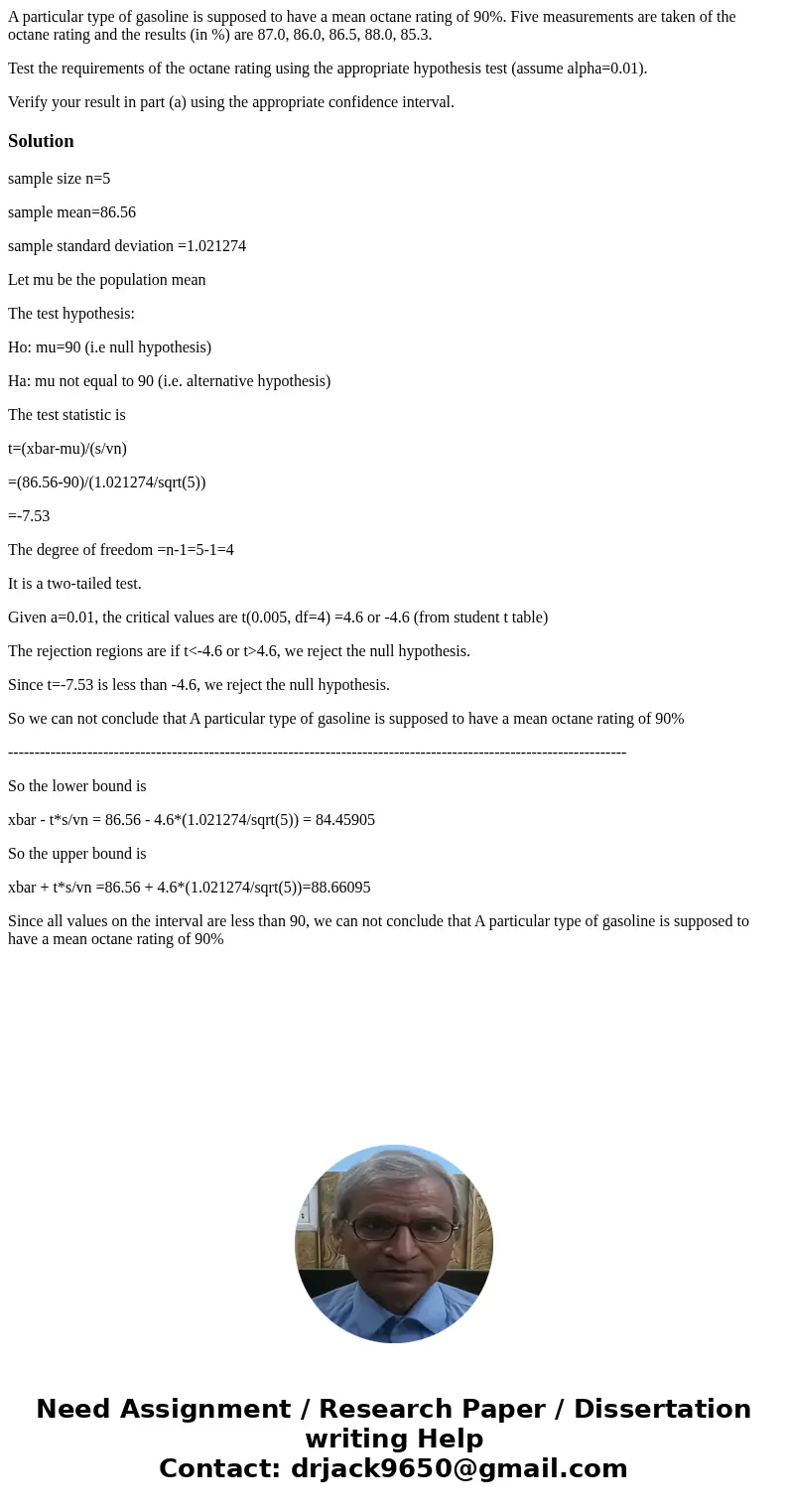A particular type of gasoline is supposed to have a mean oct
A particular type of gasoline is supposed to have a mean octane rating of 90%. Five measurements are taken of the octane rating and the results (in %) are 87.0, 86.0, 86.5, 88.0, 85.3.
Test the requirements of the octane rating using the appropriate hypothesis test (assume alpha=0.01).
Verify your result in part (a) using the appropriate confidence interval.
Solution
sample size n=5
sample mean=86.56
sample standard deviation =1.021274
Let mu be the population mean
The test hypothesis:
Ho: mu=90 (i.e null hypothesis)
Ha: mu not equal to 90 (i.e. alternative hypothesis)
The test statistic is
t=(xbar-mu)/(s/vn)
=(86.56-90)/(1.021274/sqrt(5))
=-7.53
The degree of freedom =n-1=5-1=4
It is a two-tailed test.
Given a=0.01, the critical values are t(0.005, df=4) =4.6 or -4.6 (from student t table)
The rejection regions are if t<-4.6 or t>4.6, we reject the null hypothesis.
Since t=-7.53 is less than -4.6, we reject the null hypothesis.
So we can not conclude that A particular type of gasoline is supposed to have a mean octane rating of 90%
---------------------------------------------------------------------------------------------------------------------
So the lower bound is
xbar - t*s/vn = 86.56 - 4.6*(1.021274/sqrt(5)) = 84.45905
So the upper bound is
xbar + t*s/vn =86.56 + 4.6*(1.021274/sqrt(5))=88.66095
Since all values on the interval are less than 90, we can not conclude that A particular type of gasoline is supposed to have a mean octane rating of 90%

 Homework Sourse
Homework Sourse